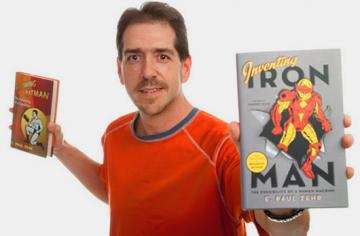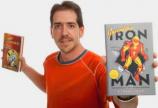Batman, Iron Man and me
- Dr. E. Paul Zehr

The tipping point for me was a Friday afternoon five years ago. I was sitting in my office searching Google Scholar for publication information on one of my recent papers. My most heavily cited paper at the time had about 150 citations. In my scientific domain, anything over 100 was considered a very high-impact paper. But what if that number really means that only 150 people read my paper? Was 150 readers an acceptable impact?
For me, the answer was no. My “normal” science wasn’t having enough of an impact on society. What I needed to do, I thought, was approach a wider audience more directly.
That’s when I decided to make the dissemination of science to the general public a major part of my activities as a scholar and academic. The decision has taken me down the road to becoming an author of books aimed at increasing scientific literacy.
Shifting gears from my normal academic writing took a bit of thinking. I am a research scientist in the area of neuroscience, kinesiology, and the wonder of the human body. I knew that communicating with the public and popularizing science would be rewarding. What I had to think through was how best to provide relevant and timely links between scientific concepts and public interests, in an accessible and engaging way.
Which is what brought me face to face with Batman and Iron Man.
Science fiction and superhero movies are extremely popular and represent opportunities for exploring scientific concepts in a pop-culture setting that is comfortable and familiar. The result for me has been two books: Becoming Batman: The Possibility of a Superhero (Johns Hopkins University Press, 2008) and Inventing Iron Man: The Possibility of a Human Machine (Hopkins, 2011).
Both icons are pitched as real humans who used training (Batman) or technology (Iron Man) to achieve extreme outcomes that seem believable. In my books I have essentially asked: Is it really scientifically possible? And if so, how would it work, and what would it mean?
In my books, science concepts are explained using the physical and technological marvels of the fictional characters to expose the real-life workings of the human body. “Neuroscience Core Concepts” from the Society for Neuroscience and the “Core Principles of Physiology” from the American Physiological Society served as guides. Those concepts range from the organization of the nervous system to pathophysiology of concussion and on to neuroprosthetics and brain-machine interface.
I have received countless emails and letters from people who have read my Batman and Iron Man books, and many of the readers thank me for improving their knowledge of how their bodies work. Over and over they write things like “I never knew muscles worked like that,” or “I didn’t know my bones could change.”
A recent email confirmed that my decision five years ago was the right one. It read, in part: “For the past few years I have been on a journey to get in shape. ... After reading your book I began to do more research and became motivated to better my physicality. ... It was very inspiring, and it got my butt off the couch. This may seem a bit funny but ever since I was a young child I wanted to be Batman. As of now I know I can never go out and fight crime but at least I feel in shape enough to. Thanks for writing this great book.”
An e-mail message won’t get me another grant, or a raise. But it does make me feel good about my own contribution to society and how the full effect of my own career may one day be weighed up and assessed.
That’s the kind of impact I can live with.
E. Paul Zehr is a professor of neuroscience and kinesiology in the Division of Medical Sciences and the School of Exercise Science, Physical, and Health Education at UVic. A longer version of this essay, published in the Chronicle of Higher Education is available at:
http://chronicle.com/article/Batman-Iron-ManMe/129972/
UVic plays host to a science communication conference May 25–27. “How To Talk about Science” is an interactive event focused on disseminating science to schools, the general public, and the media. See http://cbr.uvic.ca/conferences for more information.

